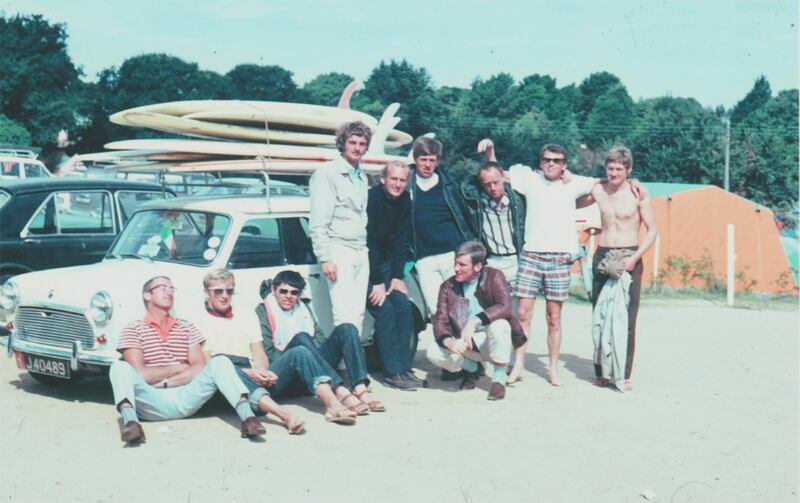If RTÉ ever emerges from its summer of Tubridy-themed discontent, the broadcaster should urgently commission a drama based on the wonderful Keep It a Secret (RTÉ One, Thursday, 10.10pm). Telling the extraordinary story of Ireland’s first generation of surfers, it has everything: big waves, big personalities, the shadow of the Troubles and a schism between surfers who wanted to evangelise the sport and those who wanted to stay off the radar and away from the masses.
It is, in other words, Point Break meets Father Ted. The film also opens a window to an Ireland largely erased from history – a place full of freedom, colour and ambition that existed alongside the Catholic Church and the perpetually moribund economy. It dares to suggest that, if there was plenty of misery, 1970s Ireland wasn’t quite the dark age of popular recollection.
Surfing in Ireland started, as things in this country often do, with a few solitary outsiders pushing against convention. In Dublin, and later Bray, in Co Wicklow, a surfing enthusiast named Kevin Cavey made it his life’s work to bring the sport across the Atlantic from southern California.
“His first love is and always will be the water,” says his wife, Ann. “I never realised that until we were going on our honeymoon. The first thing he did was he went to the [airline] desk: he wanted to make sure the board was on the plane.”
‘There are times I regret having kids. They’re adults, and it’s now that I’m regretting it, which seems strange’
Cillian Murphy: ‘You had the Kerry babies, the moving statues, no abortion, no divorce. It was like the dark ages’
The Dublin couple who built their house in a week
John Creedon: ‘I was always being sent away, not because they didn’t love me, but because they couldn’t cope’
Cavey was encouraged in his surfing safari by a local priest, who assured him that spending big on a fibreglass surfboard would pay off in the long run. Cavey, whose family ran Bray’s Royal Starlight Hotel, allied with an Englishman abroad, Roger Steadman, who had asked his office for a transfer to Ireland to take advantage of its unexplored surfing waters.
The duo expanded to a surfing-power trio with the entry of Harry Evans, whose daughter Vivienne became a keen surfer in her early teens. She equates surfing with freedom, “an exit from the domesticity that loomed in front of me”.
They were not alone in their quest to turn Ireland into a surfing paradise. In Belfast, another wave-rider group emerged, the “black wetsuit brigade”.
[ The secret’s out and on the screen about Irish surfing’s remarkable origin storyOpens in new window ]
[ Surfing in Ireland: Swell reunion for boys of summerOpens in new window ]
But not all the Northerners were on board with Cavey and co’s mission to proselytise. To some, surfing was a counterculture, a way of existing apart from mainstream society. They wanted it to stay that way.

“Australian, French, English surfers. They started to take over the breaks a bit,” says Willie Briton from Rossnowlagh, in Co Donegal, one of the holdouts. (His surfing family divided down the middle about whether to co-operate with Cavey.) “There wasn’t that many Irish surfers.”
Cavey and associates nonetheless got their wish as they brought the European Surfing Championships to Lahinch, in Co Clare, in 1972. Disaster struck when the waters that weekend proved unusually calm. Then came an 11th-hour miracle. Big waves were spotted near the competition site. Many international surfers cancelled their flights to stay and splash about.

Keep It a Secret is about surfing, but it is also a valentine to the people who dared to be different in an Ireland that disapproved of independent thinking.
It finishes with a flourish as its director, Sean Duggan, an American with Irish heritage, and the now elderly Cavey take to the waters off Sligo and give themselves to the blue and grey unknown. As the waves come in, Cavey smiles. The years fall away, and he’s that young man again, looking out to the sea and seeing a brighter future for himself and for Ireland.




